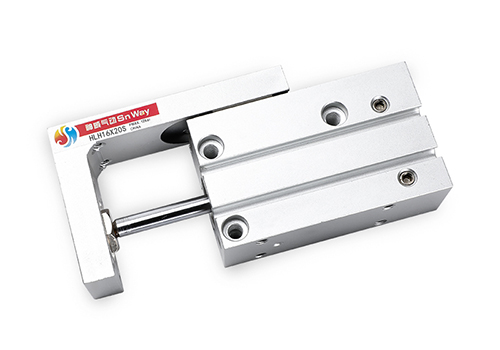What is a slide cylinder and where is it used?
Slide cylinder: Pneumatic slide is a linear drive mechanism widely used in the automation industry. It is widely used in the fields of machine tools, automation equipment, and robots. It is generally driven by compressed air, and realizes the linear movement of the slider through a combination of precision balls and linear slide rails.
The working principle of the pneumatic slide: Place the fixed mold on The cylinder inputs compressed air, and the guide rod is pushed by the cylinder at one end to the opposite direction. The pushing stroke depends on the length of the guide rod.

Slide cylinder features:
1. Compact integration of slide table, cylinder worktable and cylinder;
2. Precision cylinders are suitable for pneumatic slides used in precision assembly;
3. High rigidity/high precision, optional with adjustable stroke device (0-5mm);
4. The slide cylinder adopts cross ball guide rail, which has low friction and can achieve smooth movement without looseness;
5. The combination of the cylinder and the workbench reduces the overall size;
6. Adopt a double-cylinder structure to obtain twice the output force;
7. Built-in magnetic ring type, magnetic switch can be installed.
8. PneumaticSlide cylinder is generally used for transportation of precision instruments, with relatively high accuracy.
Pneumatic slides in industrial applications not only require good rigidity and repeatability, but their durability, labor-saving characteristics, and load capacity are all parameters that should be paid attention to in design and application. When selecting a slide cylinder, attention should be paid to factors and parameters such as pressure, bore, stroke, working environment, rod end connection method, cylinder fixing method, interface size and location, sealing requirements, buffering requirements, installation space limitations, load, etc. In order to choose the appropriate slide cylinder.
The difference between slide cylinder and rodless cylinder
Generally speaking, rodless cylinders are divided into two types: magnetic coupling type and mechanical type. Their common feature is that there is no piston rod component, they are all passed throughCylinder The piston inside the cylinder moves and moves while driving the external platform. However, the magnetic coupling type relies on magnetic force, while the mechanical type relies on a steel belt connected to the platform to pull. In fact, the rodless cylinder also has a sliding table, which can also be regarded as a sliding table cylinder. The characteristics of the commonly mentioned slide cylinder are: the piston is fixed on the piston rod, there are plates at both ends of the piston rod that can be fixed on the machine table, and the slide table moves on the piston rod.






 WhatsApp: +8615857777578
WhatsApp: +8615857777578